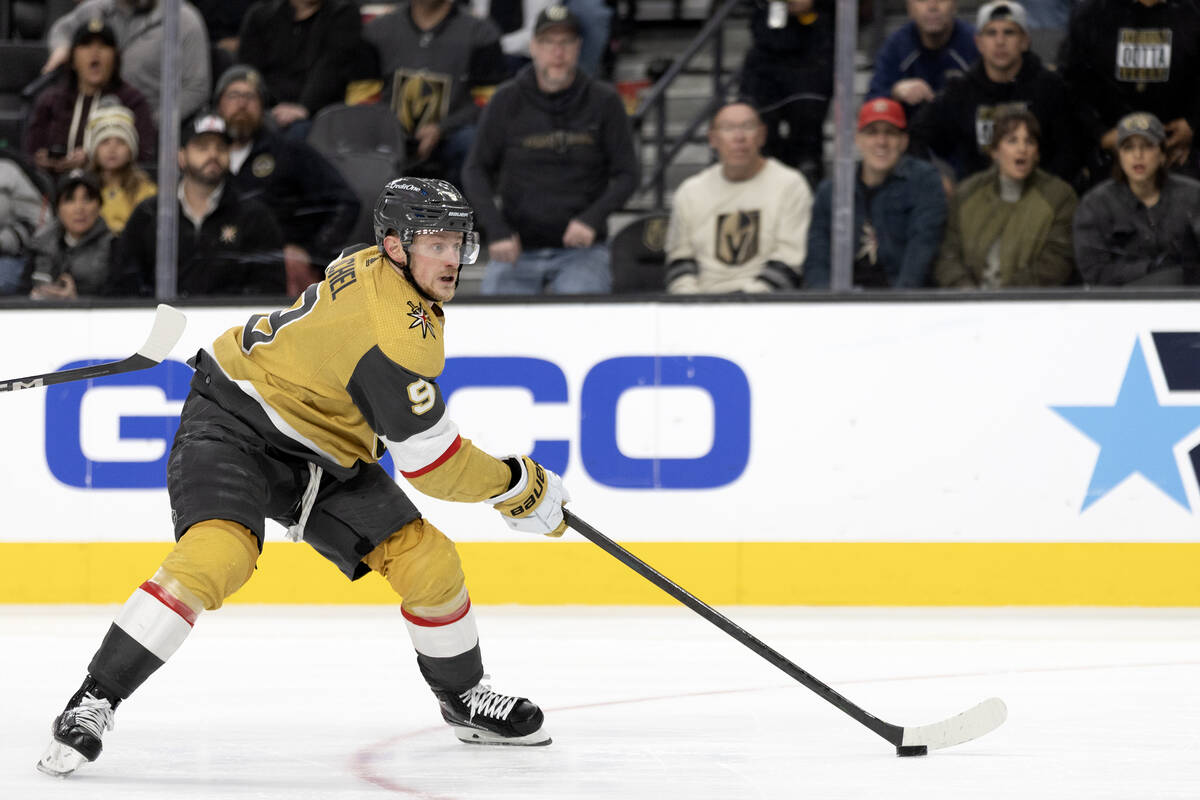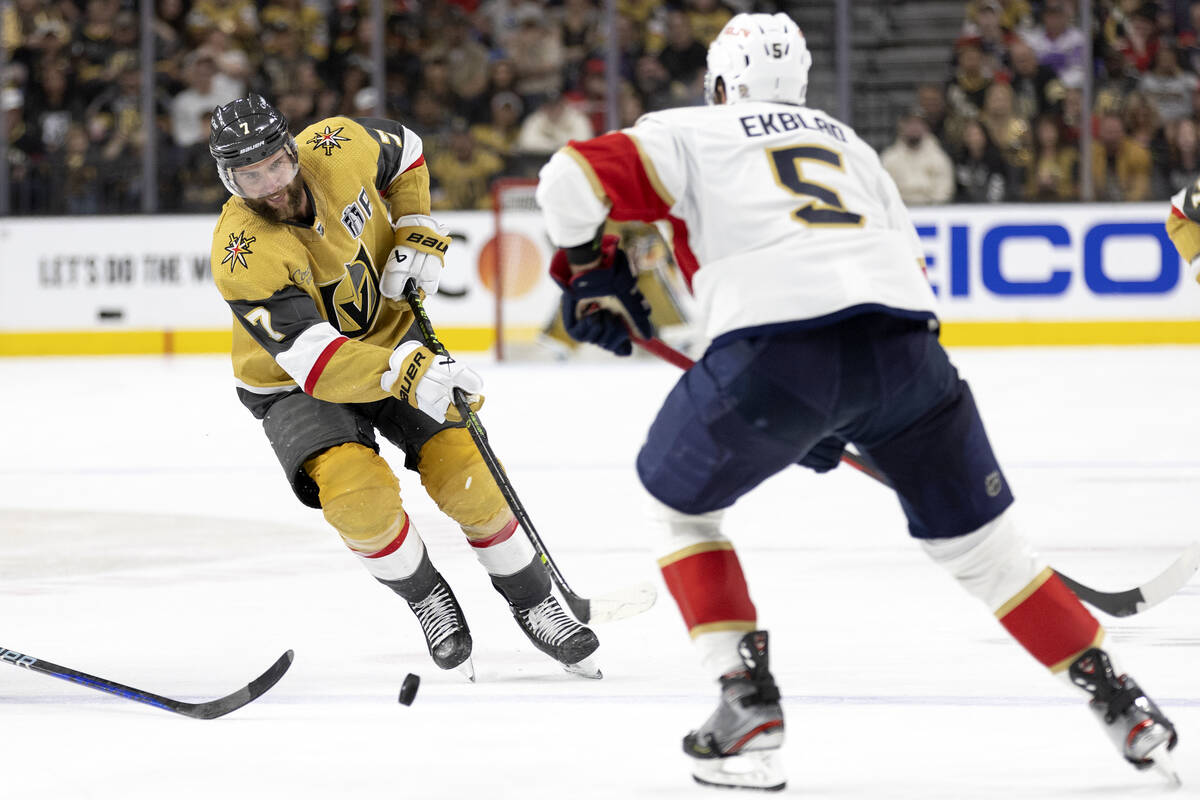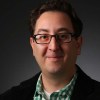What makes a great hockey stick? Golden Knights share their secrets
Chandler Stephenson thinks it’s the ugliest thing he’s ever seen. But Paul Cotter doesn’t care.
“It works for me, so I’ve kept it throughout the years,” Cotter said.
Cotter has personalized every stick the same way since he started playing hockey. Using white tape, the 24-year-old Golden Knights left wing makes a candy cane design on the shaft. He also covers almost every centimeter of the blade from the heel to the toe.
Cotter has used that pattern since he customized it on a laptop while participating in the 2017 CCM/USA Hockey All-American Prospects Game.
“It’s kind of like my trademark,” he said. “I tried to go out there without it one day, and I couldn’t do it.
“That’s my one thing that I probably won’t ever change.”
Cotter has a closer relationship with his CCM stick than the rest of his equipment. He is not alone in that feeling. Former Knights left wing Max Pacioretty once boasted he set the record for most blade patterns at the Warrior Hockey factory.
Like a carpenter and their hammer, or a chef and their knives, hockey players are incredibly particular about their sticks.
Whether it’s the curve, the lie, the kickpoint (don’t worry, we’ll explain this later) — or, in Cotter’s case, the tape job — the Knights often go to great lengths to find the right fit.
“I’m just particular about it. I like what I like,” center Jack Eichel said. “I feel like you can feel right away whether or not a stick is good. You pick it up right away, you know if it’s a good one or not.”
Tools of the trade
Hockey sticks historically were made of wood.
Manufacturers first experimented with wrapping the blades in fiberglass during the 1950s. By the 1970s, stick companies were reinforcing the shafts with fiberglass. That created lighter sticks that retained the durability of older models, according to the Toronto Star.
The two-piece aluminum shaft stick, which featured a wood blade, was popularized in the early 1990s by Wayne Gretzky before the first composite blade was introduced in 1995. Hall of Fame forward Paul Kariya was one of the new technology’s early adopters and scored a career-high 50 goals for the Ducks during 1995-96 season.
Easton then revolutionized the sport when it released its one-piece composite model called the Synergy in 2000. Composites remain the material of choice for stick companies to this day. Players say the lighter material has a “whippier” action compared to wood, allowing snap-shot artists like the Lightning’s Steven Stamkos to fire pucks with more velocity than ever.
“Where I remember the composite becoming a thing was the ’02 Olympics,” Knights captain Mark Stone said.
Most young players have limited choices of sticks provided by their junior or college team. That changes when they reach the professional level, with teams covering the cost. Representatives from stick manufacturers are also eager to provide whatever specifications players desire.
Knights center William Karlsson made two significant changes to his stick before his first season with the team. Karlsson changed the curve and also the lie, which refers to the angle of the shaft when the blade is flat on the ice.
With the new specifications making him less upright, Karlsson pumped in a career-high 43 goals. Many of those came from quick one-timers.
“I think (it helped) shooting most,” Karlsson said. “The sticks change, and they don’t make that stick anymore. It had a bit of weight to that one, and every stick nowadays is super light, so a bit of a difference. It was a nice stick.”
Defenseman Alex Pietrangelo has used the same curve for the majority of his 16-year NHL career. He has altered his stick’s kickpoint, which refers to the area on the shaft where it flexes when force is applied.
Pietrangelo moved his kickpoint higher to make his slap shot harder.
“Every year they make a new stick, so they’ve got to tweak your stick based on the new version,” Pietrangelo said. “I don’t use a really, really, really long stick. So for me, passing kind of feels the same. It’s more so for shooting. It just helps me get off a little easier.”
Eichel admits he is especially picky about his sticks. He said he’s had the same model for the majority of his nine-year career.
Eichel’s stick features a toe curve, meaning most of the curve is at the end of the blade. This helps a playmaker like him who is a strong stickhandler and prefers to fire quick wrist shots rather than wind up for slap shots.
“I’ve just always used it, so I’m more comfortable,” Eichel said. “I feel like I can do a lot with it. Shoot, pass. I like the way you can handle the puck with it.”
One of a kind
Stone’s stick might be the most unique in the NHL. Start with the knob, which resembles the handle on a tennis racket.
During Game 2 of the 2023 Stanley Cup Final, Stone broke his stick in the defensive zone and raced toward the bench. Assistant equipment manager J.W. Aiken handed him a new one on the fly. Stone, sticking with the play, set up left wing Brett Howden for a goal seconds later to put the Knights up 4-0.
Golden Assists by Mark Stone and the @GoldenKnights trainer. 🍎 #StanleyCup
📺: Game 3 at 8p ET on Thursday @NHL_On_TNT, @Sportsnet, and @TVASports pic.twitter.com/Paoz8ZsZSS
— NHL (@NHL) June 6, 2023
One of the reasons Aiken identified Stone’s stick on the equipment rack so fast was the oversized grip.
“I like the feel of it,” Stone said.
Then there’s his blade, which Stone said is the straightest in the NHL.
“Very flat. There’s zero guys in the league that use my exact curve,” Stone said. “The closest would probably be (Penguins star Sidney) Crosby.
“It’s more of a control thing for me. With my game, I don’t get put into positions too much to beat a goalie from distance. I like to have a stick that I can handle it in tight.”
Stone uses a heavier stick. He said he prefers it to have a softer feel compared to the harder ones designed for shooters such as future Hall of Famer Alex Ovechkin.
The Knights captain also is known for practicing with sticks that don’t pass his eye test in an effort to make those workouts more difficult. He saves the good-looking ones for games.
“Early on in my career, I used to use a stick for like two months, then use a new one and complain to the equipment guys that there’s something wrong with my stick,” Stone said. “They actually encouraged me in Ottawa to start using sticks a little bit more frequently so they start to feel the same as you go.
“If you ask most guys, if you use a stick for longer than maybe three or four games, if you go back to another one it will feel quite a bit different.”
Contact David Schoen at dschoen@reviewjournal.com or 702-387-5203. Follow @DavidSchoenLVRJ on X.
Up next
■ Who: Senators at Golden Knights
■ When: 5 p.m. Sunday
■ Where: T-Mobile Arena
■ TV: KMCC-34, KnightTime+
■ Radio: KKGK (1340 AM, 98.9 FM)
■ Line: Off


















